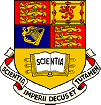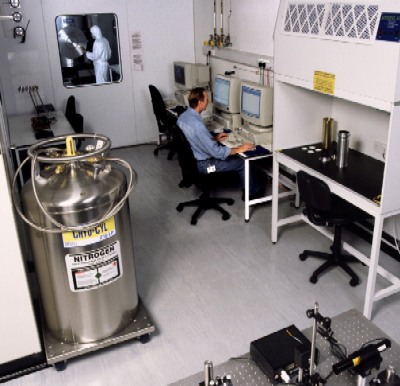
 |
|
News Page |

October 2000 |
This month's news stories:New Appointments in SPATRector's Award for Ray Wrigley AGU Award for Tim Stubbs |
 New Appointments in SPAT
New Appointments in SPATAs a result of the new Departmental Strategy, aimed at further improving the Department's research capability, I am very pleased to say that we have two new members of the academic staff joining us over the next few months. This is very welcome news, and shows a very positive level of support from the Department for SPAT.
The two new members of staff are very high quality scientists, who we are delighted to have attracted: they are Professor Michael Thompson of QMW (pictured), a solar physicist working specially on helio-seismology; and Dr Juliet Pickering, from the LASP group in the Department, a spectroscopist, who will be working on atmospheric radiative measurements.
Mike's arrangements have all been settled, and he will be starting on January 1 2001; Juliet will join us on October 1, and final arrangements for her appointment are being settled now.
A warm welcome to both Mike and Juliet from us all!
John Harries 25th September 2000

I am delighted to announce that the year 2000 Rector's Award for Excellence in the outstanding service category has been awarded to SPAT engineer Mr. Ray Wrigley for his role in the development of the Earth Observation Characterisation Facility (EOCF). Ray joined SPAT from the National Centre for Atmospheric Research in Boulder, Colorado, USA, where his projects included the SOLSTICE instruments for both the Upper Atmosphere Research Satellite and the Earth Observing System satellites, and the sounding rocket program at NCAR's High Altitude Observatory.
The EOCF, pictured on the right with Ray in the background in the clean suit, is a state-of-the-art radiometric characterisation facility including optical tables, electro-mechanical engineering support and an ultra-clean high vacuum chamber for the testing of space instrumentation. The facility was developed on a tight schedule during 1998 and early 1999 to support the characterisation of the Geostationary Earth Radiation Budget (GERB-1) instrument in May 1999. This involved Ray as a key player, as part of the GERB team led by Mr. Steve Kellock. Subsequently, the GERB-2 instrument also underwent system-level characterisation at the EOCF in Spring 2000, as will the GERB-3 in January 2001, and GERB-4 at a later date. Resources to build the EOCF were provided by a grant from the Natural Environment Research Council.
The Award will be presented by the Rector at a ceremony in the Council Room of 170 Queen's Gate, on Monday 6th November 2000 at 15:00.
Warm congratulations from all in the group, Ray.
John Harries 25th September 2000

Tim Stubbs, currently a second year PG student, is one of the winners of the "Outstanding student paper awards" at the AGU meeting held in Washington DC in June 2000. The award was for his poster entitled "Dawn/Dusk asymmetry in particles of solar wind origin within the magnetosphere". Tim is a PPARC CASE student, working jointly with Prof. Peter Cargill at IC and Prof. Mike Lockwood at the Rutherford Appleton Lab (RAL). The work also involved important contributions from Drs Manuel Grande, Chris Perry and Barry Kellet, all at RAL, Dr Joe Fennell from the Aerospace Corporation, and Adam Rees a 1st year SPAT student.
The poster presented a survey of observations of He2+ ions made by the Magnetospheric Ion Composition Sensor (MICS) of the Charge and Mass Magnetospheric Ion Composition Experiment (CAMMICE) instrument aboard the POLAR spacecraft. These ions are characteristic of solar wind plasma. The goal of this work is to determine their means of entry into the magnetosphere, and cause of energisation.
The occurrence probability of these solar wind ions was then plotted as a function of Magnetic Local Time (MLT) and invariant latitude (L) for various energy ranges (click on the figure to the right). For all energies observed by MICS (2.0-26.4 keV) and all solar wind conditions, the occurrence probabilities peaked around the cusp region and along the dawn flank. Further research rules out direct entry of the particles into the magnetosphere. The asymmetry, with enhanced fluxes on the dawn flank, persisted for lower energy ions (below a "cross-over" energy of about 26 keV) but reversed sense to give higher fluxes on the dusk flank at higher energies. This can be explained by the competing effects of gradient/curvature drifts and the convection electric field on particles that are convecting sunward on re-closed field lines.
Peter Cargill 1st September 2000
View Last month's news, older news or return to Space and Atmospheric Physics home page